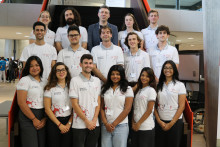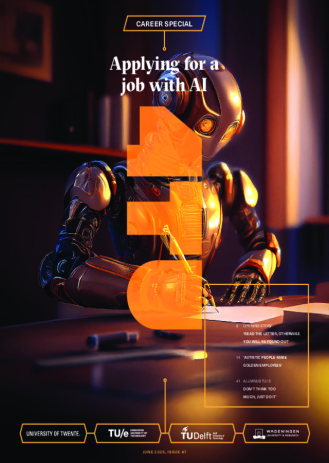It was a momentous occasion for the approximately 30 Indian AIOs and students at the informal gathering organised by the Indian Students Association (ISA@UT). At the end of the day, they had first-hand answers to pertinent questions concerning the status-quo of science and technology in India and the modus operandi of the science advisory council chaired by the guest of honour. Rao also shed some light on the steps that would ensure the enhancement of research profiles at university levels and the growth of the relatively under-developed regions in India.
The Indian economy is demonstrating a consistent upward trend and the job market is booming thanks to a thriving IT sector and ever-burgeoning investments by multi-national companies. However, research activities in science and engineering are far and few between, best exemplified by the number and quality of research publications. Industrial organisations, hardly collaborating with educational institutions and research centres, are also on the same boat. This regrettable state of affairs is not due to a lack of talent but rather a drain of talent. Numerous expatriate Indian researchers are carving a niche for themselves abroad. The prime culprit behind this brain-drain is the virtual lack of research at most Indian universities. Professor Rao stated that the cure lies in reversing this trend and it is imperative that more Indian researchers stay and work in their country. Also, he called for the avoidance of disproportionate attention to the IT sector.
Recently, the yearly number of students enrolled in Indian universities for undergraduate engineering programs is approaching a staggering 400,000. As the educational policy-maker, he encourages the churning out of more and more engineering and science graduates while simultaneously improving educational standards, in hopes that even if a small percentage stay and work in India, that would still be tantamount to a pond full of fish. Rao added that the overall scenario is not as bleak as it seems; many Indian companies, led the pharmaceutical arena, are realising the need for advanced research programs and have already set the wheels in motion.
Asked about steps taken by the Indian government to improve the quality of research at the universities, Rao enumerated several, most prominently the setting up of a special committee armed with a huge budget to improve basic research facilities at universities, and the introduction of fellowship programs offering very good remuneration and opportunities to attend up to five international conferences a year. The effects of these programs could be far-reaching, as they could pave the way to curb or reverse the brain-drain trend. Rao is also very much aware of the gross disparity in the educational standards of various regions of India. Promising steps include proposals to create new Indian Institutes of Science (IISc) and Technology (IIT) throughout the country to provide high-quality education and circumvent geographic, demographic, and cultural barriers.
In Rao's opinion, there is plenty of funding in India and one can garner all sorts of laurels without working abroad. He himself did the majority of his research at various Indian universities. At 72, his contributions to academia are seemingly unending. What keeps him going? `There are no limits for excellence and performance; there will never be a shortage of challenges and opportunities. Science is like an infinite ladder; the higher you climb it, the more the steps you see', says the man with over 1400 publications and 39 honorary doctorates to his credit.

Professor C.N.R. Rao and Professor Vinod Subramaniam (chair of Biophysical Engineering at UT), flanked by Indian students and AIOs.







